What are the Best Tires for Arizona?
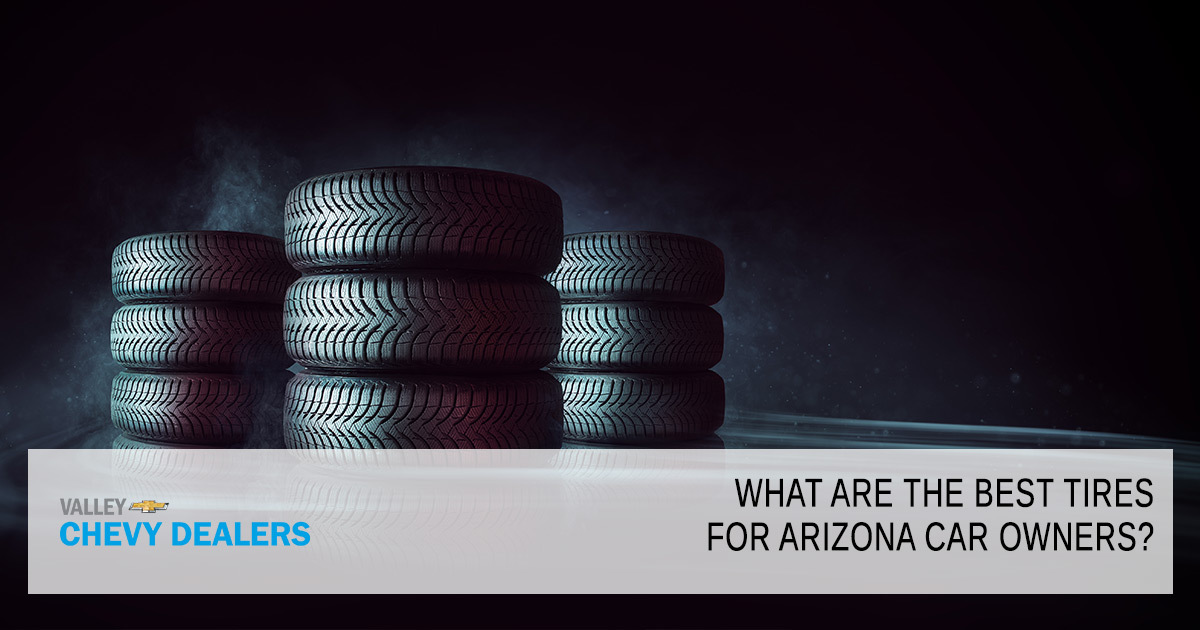
Updated: 1 July 2021
Sometimes it seems like our friends and family in the Midwest don’t understand how easy they have it. Their tires get oft-ideal conditions in which to operate. Moderate temperatures, light humidity, and smooth roads allow their tires to feel like they can last forever.
In Arizona, though, we don’t get that luxury. Our tires have to combat high temperatures and dry air that make roads crack and jagged. Our off-roading isn’t just pulling into a grassy field to throw a picnic but instead takes place on rocky, sandy trails that disembowel tires lacking the necessary toughness.
Due to the extreme conditions that tires face, it’s more difficult for Arizonans to find the best tires for their needs. Luckily, Valley Chevy can help with our tire buying guide and a wide selection of the best tires for Arizona.
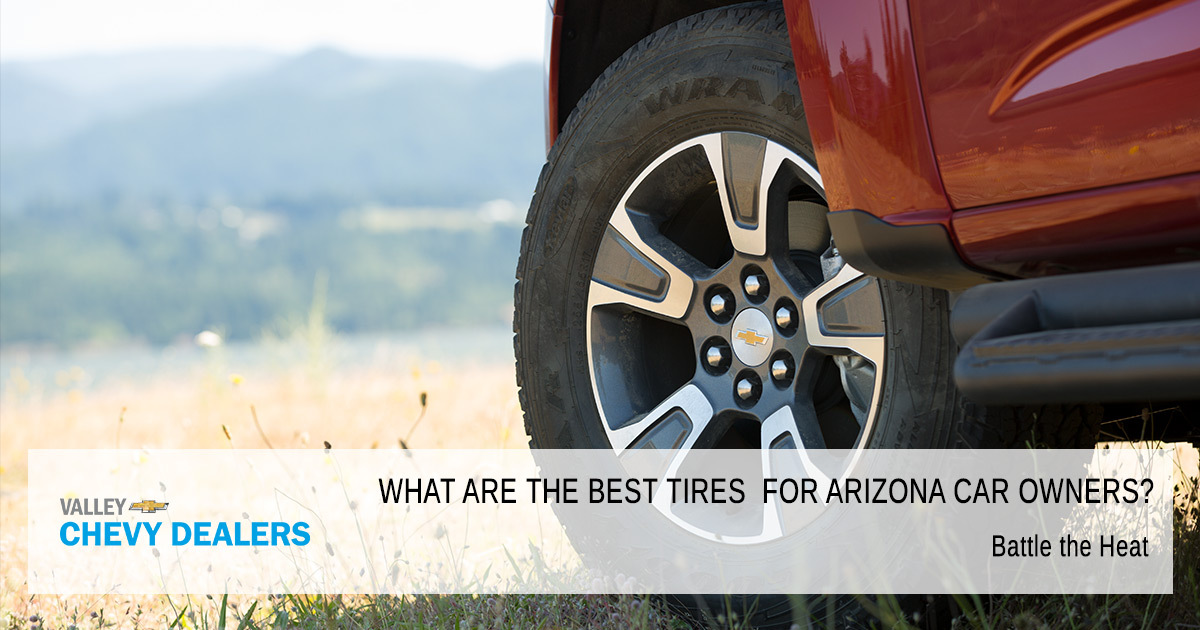
Battle the Heat in Arizona
The most significant challenge tires face in Arizona is the heat. In 2018, the Phoenix area reached triple-digit temperatures on 128 days.
When air temperatures get that high, road surfaces get even hotter. A recent news report found that on a day where the temperature reached 101 degrees Fahrenheit, the temperature of asphalt hit 145 degrees.
So, when purchasing tires for the Valley of the Sun, they must stand up to that type of heat, especially if your car is considered high-performance or you’re one to put the peddle to the metal. Summer tires, with their shallower tread, allow for more friction and grip and are the best tires for hot climates.
The low tread also helps on the (few) days when it rains in Arizona, too, by better pushing water away from the tire, thus reducing the risk of hydroplaning.
Summer tires shouldn’t be used in cold weather, especially if there’s snow or ice on the road. So, if you commute to the parts of Northern Arizona that experience winter weather, these tires may not be as helpful as all-season tires.
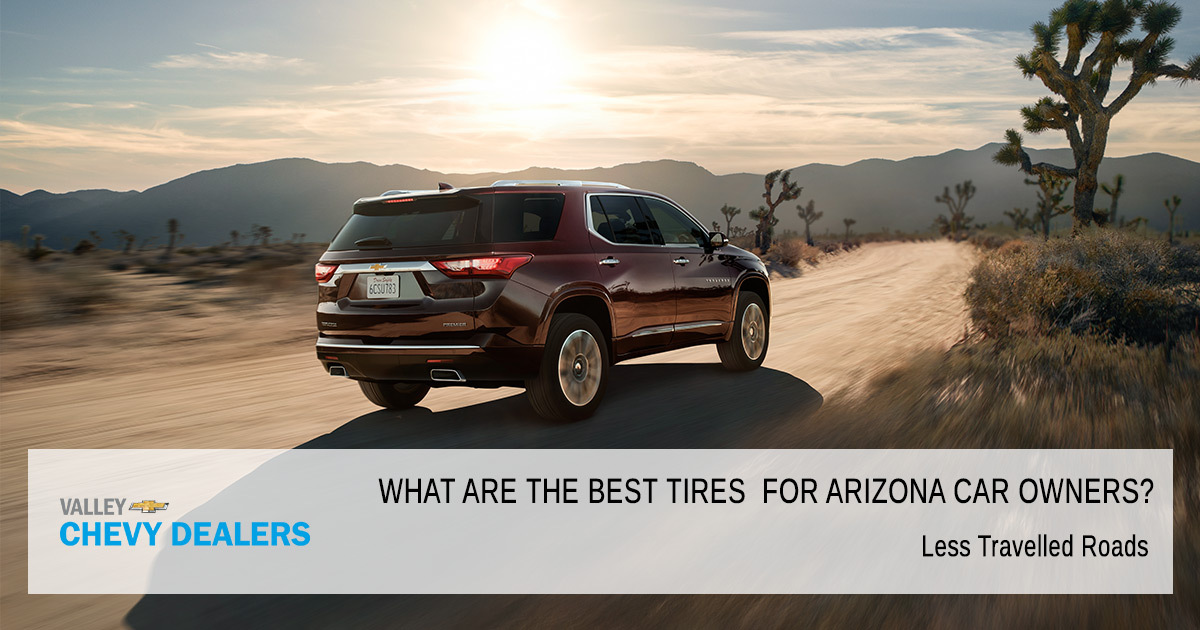
Arizona’s Less Travelled Roads
Arizona is one of the most beautiful states in the nation. Beyond the typical tourist destinations of the Grand Canyon or Sedona, there are scores of sights to see and places to experience.
Often, though, this means taking your car off-road. It shouldn’t surprise anyone to know that Arizona is primarily a desert. Our terrain can be tough, full of jagged rocks, loose gravel and sand, and meandering paths.
To drive through this space means your tires have to endure anything that sits between you and your destination. All-terrain tires are what you’re looking for in these situations. These tires are typically used for trucks, SUVs, and crossover vehicles and can capably handle both hot Arizona highways and off-road use.
With a deep, rugged tread, all-terrain tires improve traction and grip, letting your car gobble highways and off-road paths with ease. These tires also work well when you're hauling a heavy load for work, camping, or moving.
One thing to keep in mind, though, is that because of the more treacherous roads these tires face, they can wear down quicker. This shorter lifespan means you’ll find yourself purchasing tires more often than you would with all-season tires.
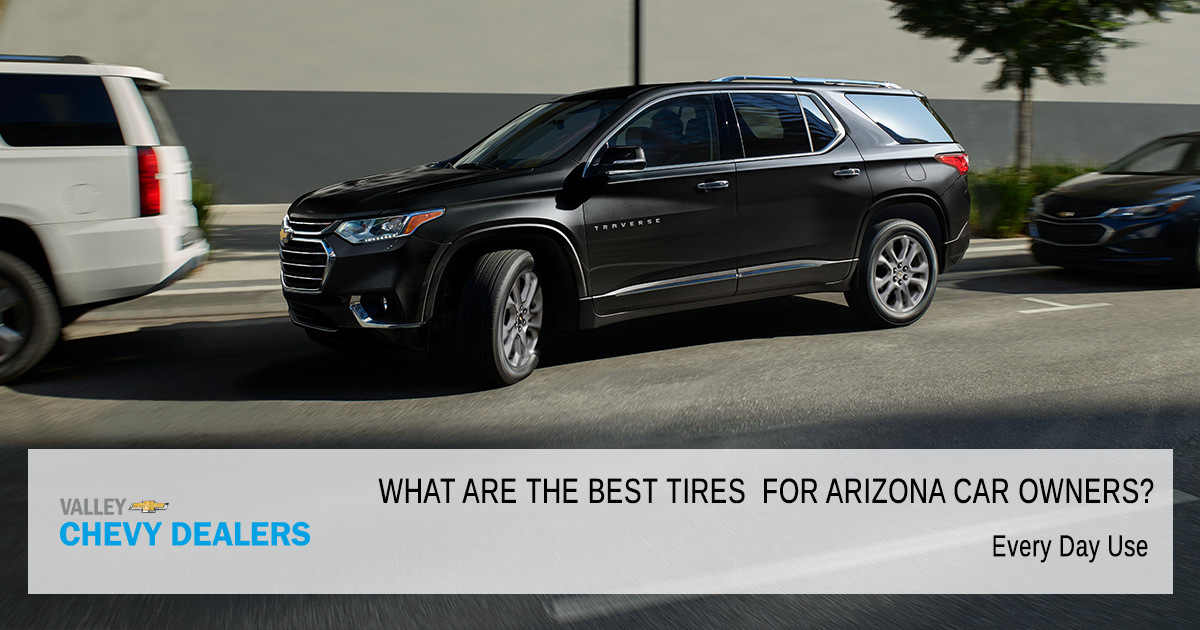
Tire for Everyday Use
If you’re one to stick to well-traversed roads or spend time in colder temperatures, the best tires for you are all-season tires. All-season tires offer year-round traction, a comfortable ride, and effectiveness in both extreme heat and cold.
Generally speaking, they help your car operate safely in most conditions regardless of the type of car you drive. So, unlike all-terrain tires, which are typically exclusive to larger vehicles, or summer tires, which are the best option for high-performance automobiles, all-season tires come in sizes to fit practically every car.
You’ll be able to purchase all-season tires for sports cars, family vehicles, trucks, and SUVs. You’ll also maintain some of the advantages you expect from your vehicle’s class. All-season tires for SUVs can still handle light towing and off-roading. All-season truck tires still hold the road well when carrying a heavy load.
The higher speed rating and better handling of the performance all-season tires are ideal for your high-performance automobile, although you should expect less traction in dry and wet conditions to make up for the increased winter grip. If you don’t have a specific need for all-terrain tires or summer tires, you’ll likely be satisfied with all-season tires.
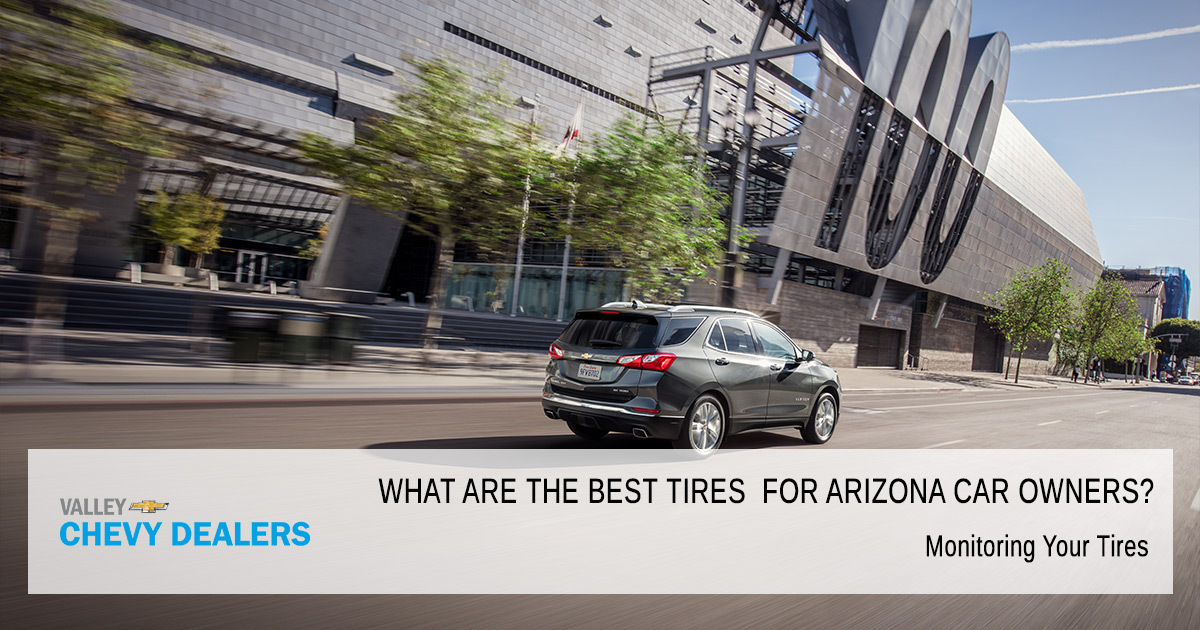
Monitoring Your Tires
If you notice yourself stopping at the gas station more often than you’re used to, you may be dealing with an underinflated tire. Tires driven while underinflated will show significant wear on the edges of the tread.
Beyond the fuel economy and tread issues, underinflated tires are a potential road hazard, too. Luckily, since 2008, all new cars come equipped with tire pressure monitoring systems or TPMS.
However, models use different technology to monitor tire pressure, so it’s essential to know which one is installed in your car. Even if your car was manufactured after 2008, you should check your tires regularly.
Well-maintained tires should wear evenly across tread. If you notice that the center of the tread is much more worn than the outer edges, you’re dealing with overinflated tires, which also pose a safety risk.
Tires worn more on one side of the tread indicates a misalignment issue. Knowing your tire’s tread depth is a crucial indicator of when they’re nearing the end of their life.
Your tire can run safely with a tread depth of 4/32-inch. Once your tires reach 3/32-inch, though, you should start researching new tires. By the time your tires reach 2/32 inches, you should be on your way to your tire replacement appointment.
You can check your tire’s tread depth quickly with some pocket change. Insert a quarter into a tread groove, with George Washington’s head pointed towards the tire. If the tread covers any of his head, you have at least 4/32-inch left.
If you conduct the same test, but with a penny instead of a quarter, the tread should cover at least some portion of Lincoln’s head. If it doesn’t, your tread depth is less than 2/32-inch.
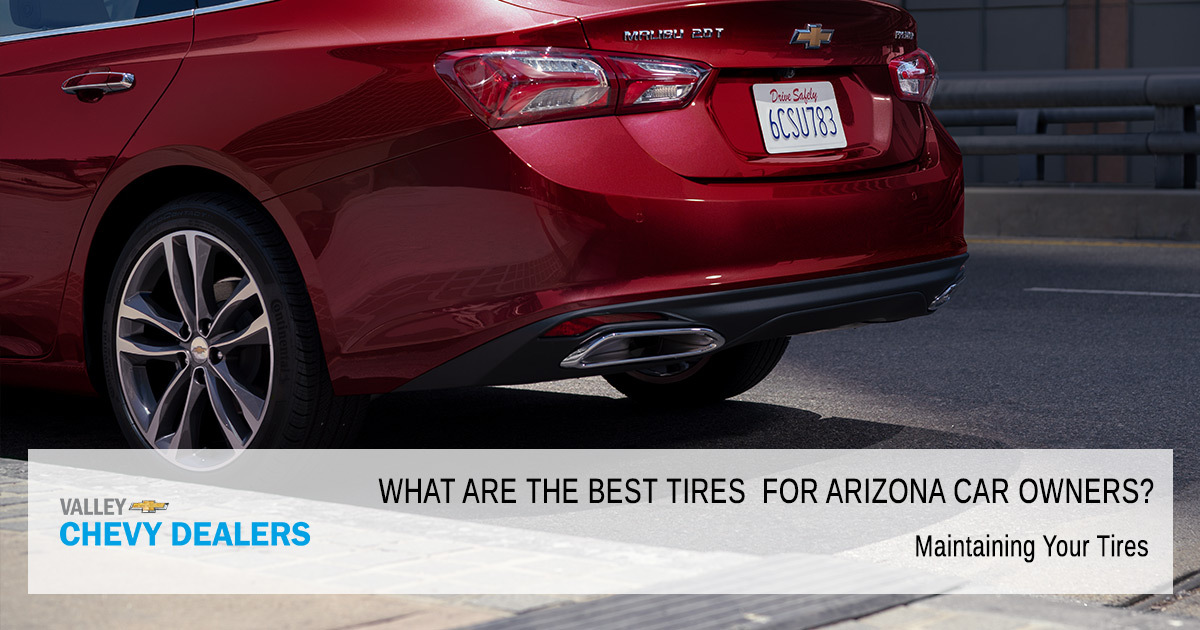
Maintaining Your Tires
A well-maintained tire is a tire that keeps you safe. Make sure to check your tire’s air pressure at least once a month and preferably before you’ve done any driving that day. If you’re not sure what the air pressure for your tires should be, you can find it in one of several places:
-
- Driver’s or passenger’s side door
- Glove compartment
- Inside the door to your fuel cap
In the same spot you find the air pressure for your car, you should also find its total weight capacity. Try not to exceed this number whenever possible. The more weight your car holds, the more pressure your car puts on the tires. Increased pressure on your tires can lead to overheating and tire failure.
AZ Best Tires at Valley Chevy
Safety is the name of the game, and Valley Chevy is here to help you equip your car with the safest tires on the road.
Our dealerships are well stocked in the most trusted tire brands, and our service team can walk you through the options that strike the best balance of traction, lifespan, and value for your car’s needs.
Visit your local Valley Chevy dealership today, whether you’re looking for a new car or needing service for your current one. With 13 locations throughout the Phoenix area, you’ll find the right tires just around the corner.

